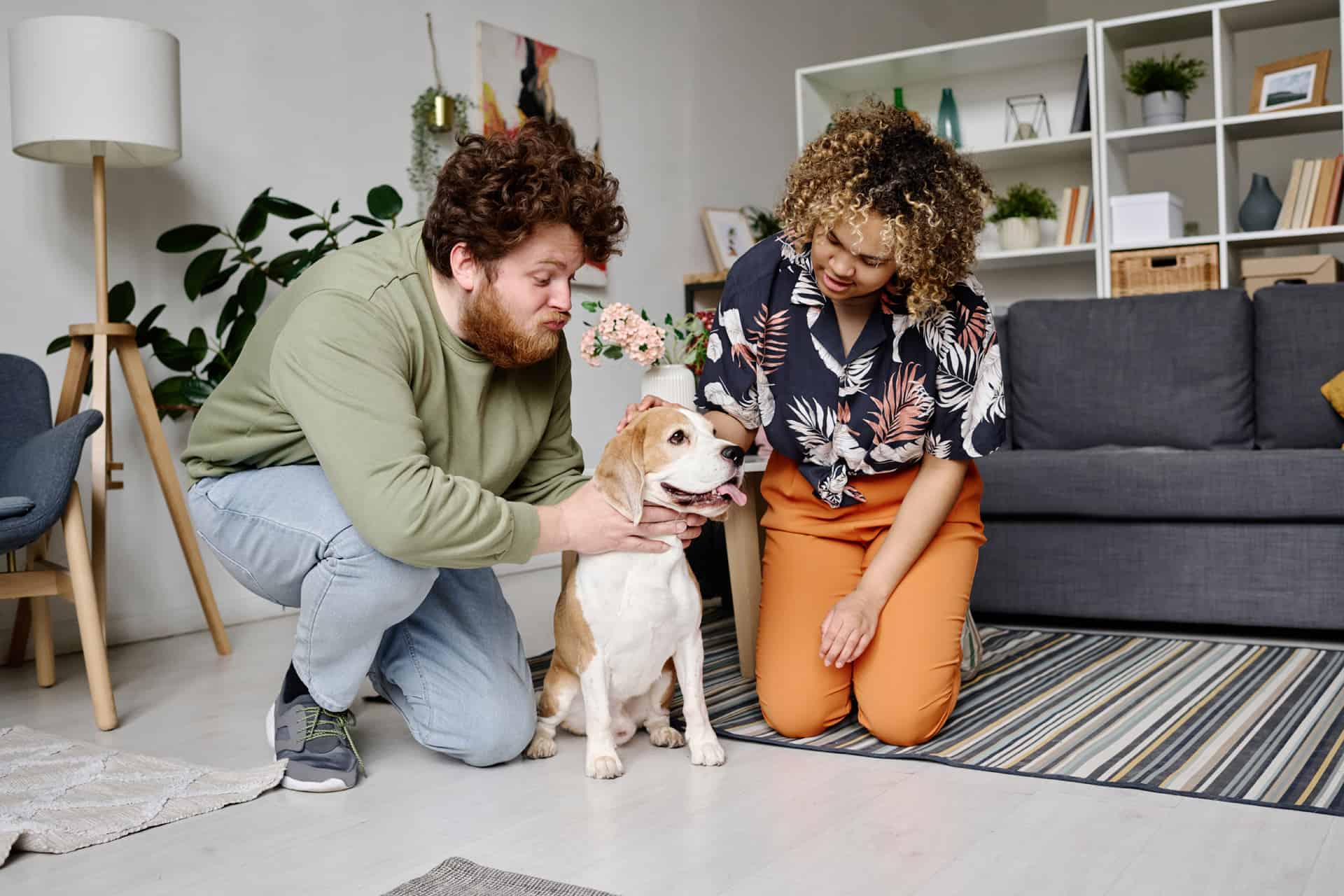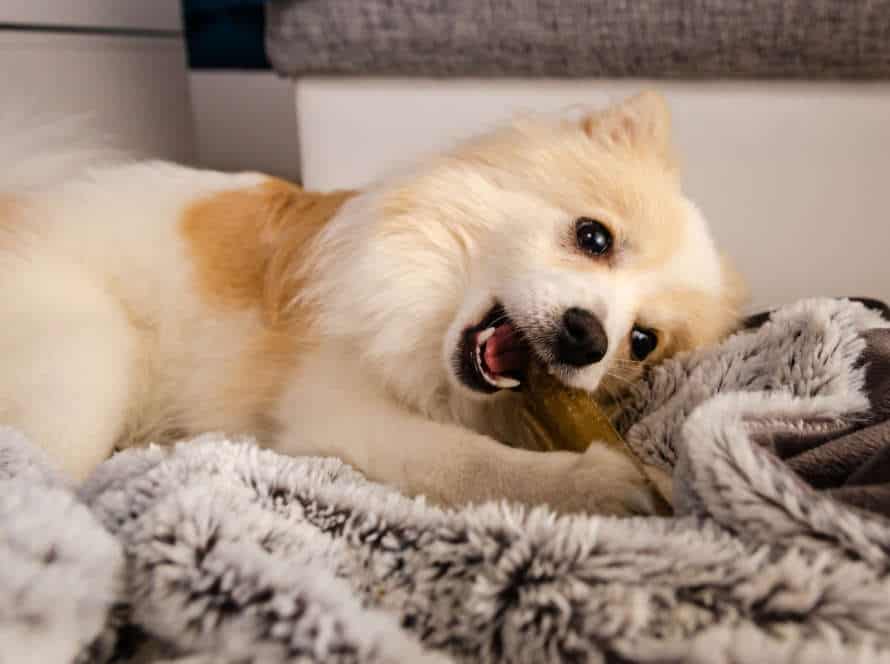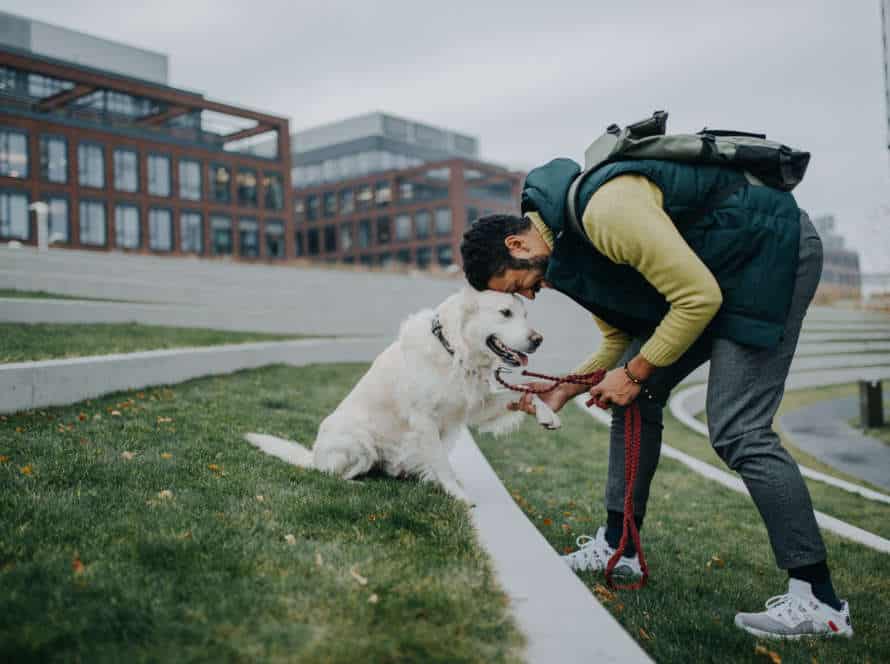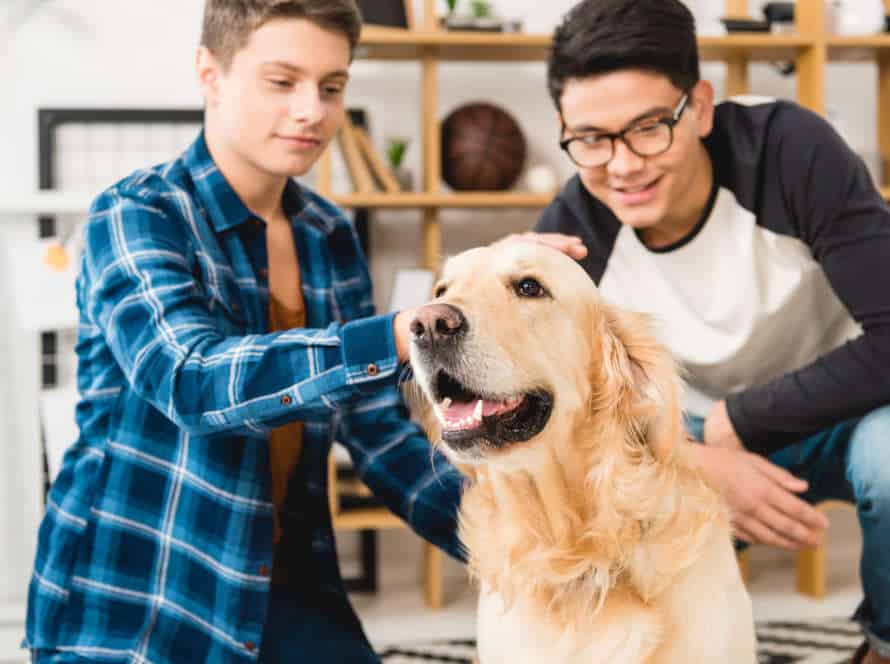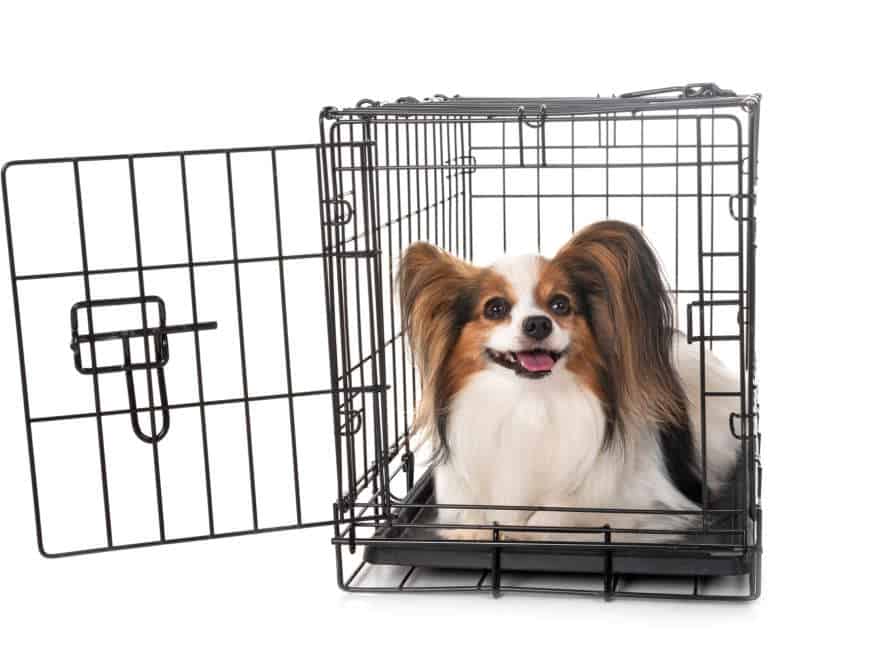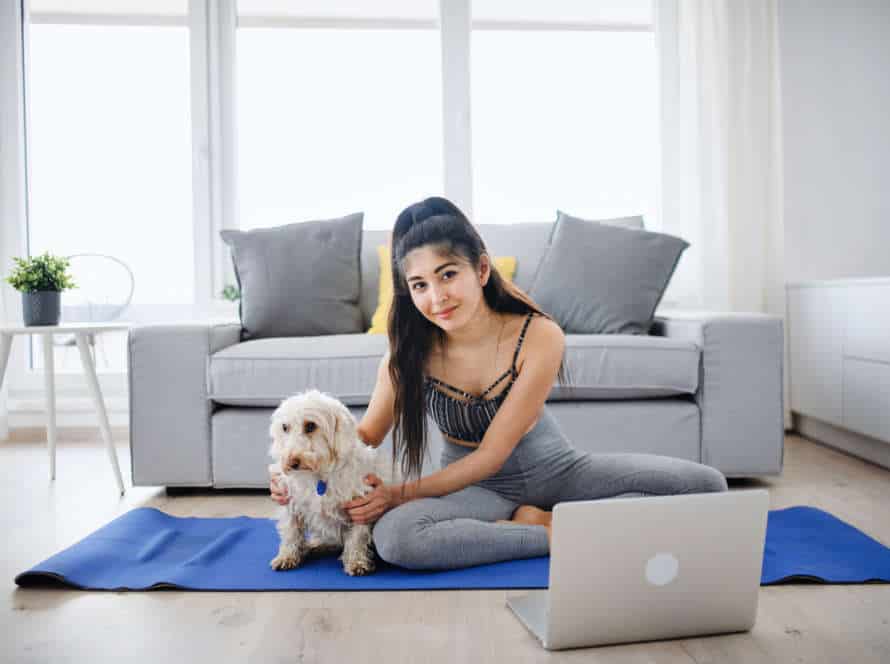House Training 101: A Comprehensive Guide for New Dog Owners
House training your new pooch is essential for a happy & harmonious relationship. Here’s a guide for new owners:
- Set up a designated potty area with easy access for your pup.
- Create a routine with regular feeding, playtime & potty breaks.
- Watch your dog indoors & reward when they show the desired behavior.
- Learn to recognize when your dog needs to go outside, & prevent accidents.
- Clean up any accidents completely to remove any lingering odors.
- Be patient & consistent – house training may take weeks or months.
- Remember to praise & reward your dog for good habits.
Pro Tip: Crate train your pup to help with house training & provide a comfy & safe space for them to rest.
Understanding key principles of success in house training
House training your new furry friend can be a great experience for both you and your pup! To ensure success, you should learn the key principles. This guide will provide info on topics such as the importance of:
- schedule,
- reward quality, and
- consistency.
Consistency is Key
Consistency is key for success when house training your pup. Dogs love routines and being consistent with your training will help them learn quickly and effectively. Here are some tips for applying consistency:
- Feed them at the same time every day to regulate bowel movements.
- Pick one area as their potty spot and take them there every time.
- Use the same command each time, like “go potty” or “do your business“.
Consistency is the key to house training your dog. Use these tips to help your furry friend learn fast and develop good habits!
Patience for Success
Patience is an essential element of success when training a new pup. Accidents will happen, and progress may be slow. Yet, with patience and consistency, success is possible.
Here are more key rules to keep in mind:
- Create a regular schedule for meals and outdoor potty times.
- Use positive reinforcement, like treats and compliments, to reward proper behavior.
- Keep watch over your pet indoors to avoid any messes.
- Use a crate or sleeping spot for your dog at night or when not supervised.
- Clean up accidents quickly and correctly to prevent more.
- Be consistent and patient with training and don’t scold for accidents.
With enough hard work, your canine will learn to be a well-trained family member. Bonus tip: Don’t forget to celebrate successes to stay motivated!
Positive Reinforcement Techniques
Positive reinforcement is key when house training your pup. Follow these principles for success:
- Consistency – Have a routine for mealtimes, walks, and potty breaks.
- Positive Reinforcement – Reward good behavior with treats, words of praise, or physical affection.
- Patience – It takes time to house train, so be patient!
- Firmness and Fairness – Correct unwanted behavior in a firm but fair way. Do it promptly and guide your pup to better habits.
By following these tips, you’ll house train your pup effectively and build a strong relationship based on trust and respect.
Preparing for House Training
Getting your puppy ready for a great life with you? House training is a must! Before they come, make sure you have the supplies. In this article, we’ll tell you what to get, how to set up a routine, and how to make a comfy space for learning. All you need to do is get ready!
Necessary Equipment to have before training
Start house training your pup with ease! Get the following items:
- Crate – Comfort and security while avoiding mess in the house.
- Training Pads – Teach them where to do their business.
- Cleaning Supplies – Pet-specific stain and odor remover are must-haves.
- Treats – Reward good behavior.
Ready? You and your pup will succeed!
Establishing a Schedule for your dog
Get a plan for your pup. Here is what to do:
- Work out their age and toilet needs. Puppies usually need a toilet break every hour. Older dogs can go longer.
- Decide on words and phrases to use when taking your pup out for a toilet break.
- Organize a regular feeding routine and stick to it. This should help with the toilet habits.
- Build a daily routine. Include walks or playtime so your pup knows when to expect these activities.
- Be consistent and patient. It takes time to make a successful routine.
- Be able to change the schedule if needed, to match your pup’s lifestyle.
- Pro Tip – Praise your pup and give them treats when they do a good job. That will encourage them.
Setting up a Designated Potty Area
Designating a potty area for your pup is essential for house training. Here’s how to set it up:
- Choose a spot outdoors – visible & accessible to your pup.
- Use a command like “go potty” or “do your business” when taking them there.
- Make sure the area is the right size for your pup – with space to move & sniff.
- Bound the area with rocks, mulch, or gravel.
- Praise & reward your pup when they use the designated area.
- Be consistent until they are fully house trained.
Pro tip: Clean the area regularly & use enzyme cleaners to eliminate odors.
Essential House Training Techniques
House training is a must for any canine parent! It needs patience, reliability, and dedication from you, the owner. To get started, it’s key to understand the basics of house training and the techniques that can be used. This guide will provide an outline of the different house training techniques and arm you with the correct knowledge to help train your doggo fast!
Crate Training
Crate training is a great way to house train your pup, and keep them safe and comfortable when you’re not home. Here’s how to do it:
- Choose the right size crate. It should be big enough for them to stand, turn, and stretch out, but not too big so they can use one area for sleeping and the other for pottying.
- Introduce it gradually. Place the crate in a common area and let your pup explore it. Then, leave them in it for short periods of time while you’re home, and longer periods when you’re away.
- Use positive reinforcement. Treat and praise your pup when they go into the crate and stay calm while inside.
- Don’t use it as punishment. The crate should be a positive and safe space, not a place to punish them.
Be patient and consistent, and crate training can be a great way to house train your pup.
Paper/Pee Pad training
Paper or Pee Pad training is great for small dogs and those living in high-rise apartments without easy outdoor access. Here’s how to do it:
- Choose a spot in your home. Make it easily accessible and away from their bed and food.
- Introduce them to the area. Use a verbal command or bell to signal it’s time to go potty.
- Praise and reward when they do it.
- Clean up messes and replace soiled paper/pad with fresh.
- Move the paper/pad closer to the door leading outside.
- Gradually transition your dog to outdoor potty training.
- Be patient and consistent for best results.
Outdoor Training
Outdoor training is essential for house training a pup. Here are some top tricks:
- Feed each day at the same time; this helps digestion and waste regulation.
- Designate an area for elimination; take your pup to the same spot each time.
- Be consistent; take them outside at regular intervals after meals, naps, and play.
- Reward and Praise; when they go in the designated area, give them a treat and praise.
- Patience is key; it may take some time for your pup to learn new behaviors. Consistency and positive reinforcement are the way to success.
Troubleshooting problems during House Training
Train your dog at home – it’s vital! Doing so makes sure they become an obedient pet. You could face problems while training your pup. Troubleshooting tips help you if issues arise. Here’s what to focus on:
Accidents in the House
Accidents in the house are a common issue when house training your pup. Troubleshooting these problems can help you get back on track. Here are some tips:
- Feed your dog at regular times.
- Supervise and take them outside often, esp. after meals, play or naps.
- Reward them for successful potty breaks outside.
- Clean up accidents quickly with an enzymatic cleaner.
- Be patient and consistent with house training. Accidents may happen as part of the learning process.
By following these tips, you can set up your pup for success and reduce accidents in the house.
Defiant dogs, and how to handle non-compliance
Dogs that are defiant can be hard to train. But, with the correct methods, you can assist your fluffy pal in learning to obey. Here’s how to deal with disobedience when house training:
- Keep Cool: If your pup refuses to obey a command or has an accident, it’s important to stay chill and don’t punish. Instead, bring your dog’s focus back to the job or try a different approach.
- Consistency: Adhere to a regular routine, use the same commands, and reward your dog for good actions.
- Positive Reinforcement: Use treats, compliments, and playtime to reward your pooch for good conduct and inspire them to comply.
- Find Trigger Points: Search for patterns in your dog’s behavior and avoid triggers that could cause disobedience or messes.
With patience and dedication, even the most rebellious dogs can be trained successfully to adhere to orders and be good housemates. Pro Tip: Consult a professional dog trainer to tackle specific training issues or behavioral problems.
Training dogs who are Home Alone
If you have a pup that spends lots of time solo at home, it’s essential to teach them correctly. Here are some tips for training when alone:
- Set a special area for your pup with a bed, food/water bowls, and toys.
- Use positive reinforcement to get them to stay in the area when you’re out.
- Start small and increase time as they get comfy.
- Give mental and physical stimulation with treat puzzles and toys.
- Challenges can come up while house training, so stay patient and consistent. Give your pup praises for good behaviour and get help if needed.
Pro Tip: Check out doggy daycare or hire a dog sitter if you’re unable to train them yourself.
House Training in Specific Situations
Training your pup to obey in the house can be difficult. Be ready for anything that may come up, so your pup knows what you expect of them. Here, we will talk about more complex cases, such as:
- When you’re out.
- If people visit your house.
- And more.
House Training adult dogs
House training an adult pup can be trickier than with a pup. But with determination, patience, and positive reinforcement, it can be done!
Tips:
- Rescued doggos? Start with basics. Feeding schedule, routine, and confine them in crate or small area when unsupervised.
- Newly adopted adults? Keep them leashed indoors, take them out often and give treats for good behavior.
- Senior pooches? Be understanding; they may have physical issues. Potty pads or more outside trips could help.
Always reward good behavior quickly and never punish accidents. This can make them fearful. With time and consistency, house training can lead to a better bond with the furry one!
House Training multiple dogs
House training multiple dogs can seem challenging. But, it’s possible with the right techniques and effort. Here are some tips to help:
- Create a schedule. Specify times for feeding, playtime, and bathroom breaks for each pup.
- Supervise closely. Watch your dogs when they’re inside. Look out for signs they need to go outside. This is especially important in the beginning.
- Separate eating areas. Each dog should have their own area. This’ll stop territorial issues getting in the way of house training.
- Be consistent. Use the same commands and rewards for all dogs. Don’t risk them getting confused.
- Patience and positive reinforcement. Crate training, rewards, and praise your pooches when they do well. This’ll speed up the process.
House Training Senior Dogs
House training a senior dog is tricky, but not impossible! They may have physical or mental issues that require extra patience and special care. Here are some tips:
- Create a steady routine – feed them regularly, and give them regular potty breaks to form a habit.
- Use positive reinforcement – give lots of praise and treats for good behaviour.
- Keep special needs in mind – if they have arthritis or mobility problems, make sure the potty area is comfy and accessible.
- Protective gear – if they’re incontinent, use diapers or belly bands to avoid accidents.
Pro tip: Have patience! It’s hard for senior dogs to adjust to a new routine. But with consistency and positive reinforcement, they’ll be house trained soon enough!
Frequently Asked Questions
Q: What is house training?
A: House training refers to the process of teaching a new dog to eliminate outside or in a designated indoor area, rather than throughout your home.
Q: When should I start house training my puppy?
A: You should start house training your puppy as soon as possible, ideally as soon as you bring them home. Puppies have a very limited ability to hold their bladder and bowel movements, so you’ll need to establish a routine for them right away.
Q: How long does house training take?
A: House training can take anywhere from a few weeks to a few months, depending on the breed, age, and individual temperament of your dog. Consistency and positive reinforcement are key to a successful house training experience.
Q: What are some common house training mistakes to avoid?
A: Some common house training mistakes to avoid include punishing your dog for accidents, failing to establish a consistent routine, and not providing ample opportunities for your dog to eliminate outside or in their designated indoor area.
Q: How can I tell if my dog needs to go outside?
A: Signs that your dog needs to go outside to eliminate include pacing, whining, sniffing around the house or door, and sitting or staring at the door leading outside. It’s important to observe your dog closely and learn their individual signals.
Q: What should I do if my dog has an accident in the house?
A: If your dog has an accident in the house, do not punish them. Instead, clean up the mess thoroughly and make sure to remove any residual odors. Increase your diligence in monitoring your dog and providing opportunities for them to eliminate outside or in their designated indoor area.

